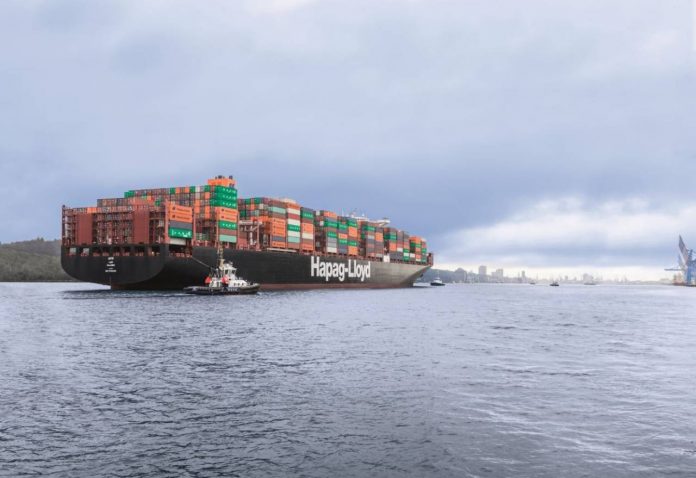Hapag-Lloyd has announced two new agreements, a syndicated loan of US$417 million and lease financing of US$472 million, for the financing of six ultra-large 23,500TEU container ships, which were ordered in December 2020.
[s2If is_user_logged_in()]The German carrier described the above deals as “green financings”, as both transactions fulfill the Green Loan Principles of the Loan Market Association (LMA), which sets the standards for this kind of transactions when it comes to loans. The compliance with relevant requirements has also been verified by an independent expert in the form of a secondary party opinion of the DNV GL.
“Green financings are financial instruments made available to exclusively finance or re-finance new or existing eligible Green Projects,” a Hapag-Lloyd representative explained to Container News.
The syndicated green loan in the amount of US$417 million has a 12-year maturity and will be used to finance three of the six container vessels on order. The credit facility is being backed by the Korea Trade Insurance Corporation (K-SURE), and the syndicate consists of 11 banks, while KfW IPEX-Bank and BNP Paribas were in charge of structuring and coordinating the transaction.
Additionally, the lease financing for the remaining three newbuildings is in the amount of US$472 million, has a maturity of 17 years plus construction-phase financing, and has been structured by the Industrial and Commercial Bank of China Leasing (ICBC Leasing).
“Our first green financings are a major milestone for us, as we are breaking new ground in the container shipping segment by financing newbuilding projects geared towards sustainability. The transactions will help us to modernise our fleet while further reducing our CO2 footprint at the same time,” said Mark Frese, chief financial officer of Hapag-Lloyd.
The new vessels, which are being built in South Korea and are scheduled to be delivered in 2023, will be equipped with fuel-efficient high-pressure dual-fuel engines, according to the Hamburg-based company, thus they will be able to reduce CO2 emissions by approximately 15-25%.
As a result, the ships will also satisfy the European Union (EU) Taxonomy’s technical screening criteria for sea and coastal freight water transport.
Asked by Container News about the way of managing a potentially significant change in LNG costs and the impact on the value of its newbuildings, Hapag-Lloyd said, that “price increases or reductions for fuel are usually reflected in our Marine Fuel Recovery Mechanism and will therefore be reviewed and adjusted on a quarterly basis.”
[/s2If]
[s2If !is_user_logged_in()]Please login or register to read the rest of the story[/s2If]







